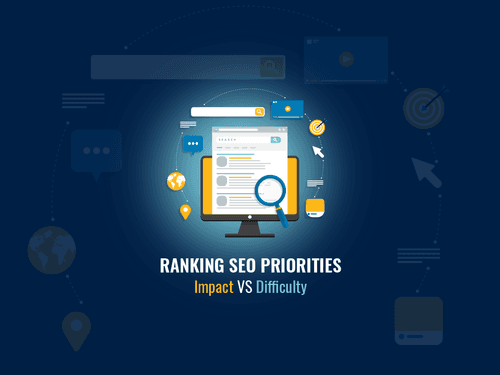The word “content marketing” is everywhere. In business development books, social media posts, and it’s even being taught to college students at universities. The concept is multi-faceted and requires a well thought out approach.
Chances are, your business may even be investing time and resources to develop aspects of content marketing such as blog posts, whitepapers, and videos. But here’s the question of the hour: are your efforts reaching the right people and producing results?
If you answered no, it may be time to rethink your content marketing strategy. To explain further, we’ll show you how thinking of your content marketing strategy like a loaded baked potato will help make your efforts ROI-worthy.
By breaking down a holistic content marketing strategy into the ingredients of a loaded baked potato, you may discover new, fulfilling ideas and surprising strategic mixes that not only satisfy your palate, but your customers, too.
Let’s dig in …
The nutrient-packed potato skin.
 The potato’s skin is an essential part of a successful baked potato. It creates the true “boat” form that allows you to stuff in all the toppings, it holds the heat in, adds a delectable texture, and is packed with nutrients like fiber, potassium, and vitamin C.
The potato’s skin is an essential part of a successful baked potato. It creates the true “boat” form that allows you to stuff in all the toppings, it holds the heat in, adds a delectable texture, and is packed with nutrients like fiber, potassium, and vitamin C.
Since the skin is so important, it’s no wonder it should be compared to a content marketing strategy, which includes deep understanding of target personas and their buyer journeys, how to connect them with content, and insight on your competition.
Without the skin, your spud is simply a sad lump of starch. And, without in-depth knowledge of your target audience and competition, your content marketing plan has no direction.
The russet potato.
 Your owned content is the spud itself. It contains educational and data-driven blog posts, eBooks, infographics, website, and more. It’s essentially the fundamental tools for a target audience to consume.
Your owned content is the spud itself. It contains educational and data-driven blog posts, eBooks, infographics, website, and more. It’s essentially the fundamental tools for a target audience to consume.
It can be eaten by itself, but without any toppings it can be dry and starchy. And, sure, your blog posts and eBooks are helpful and educational tools, but if they are simply published on your website without amplification, are they discovered by the right people?
Toppings like cheddar cheese, sour cream, and bacon will pack your baked potato with delicious flavor. Similarly, sprinkling in earned, paid, and social medias will help amplify content, allowing you to reach new audiences, build a thought-leader reputation, and create a strong following.
The ooey-gooey, extra-sharp cheddar cheese.
 Arguably the most important ingredient in both a loaded baked potato AND content marketing strategy (especially if you’re from Wisconsin), shredded cheese is the paid component in our holistic content marketing analogy. Paid media includes display and print ads, Google and Facebook ads, as well as radio and TV ads.
Arguably the most important ingredient in both a loaded baked potato AND content marketing strategy (especially if you’re from Wisconsin), shredded cheese is the paid component in our holistic content marketing analogy. Paid media includes display and print ads, Google and Facebook ads, as well as radio and TV ads.
In a perfect world, organizations would receive interested traffic solely through posting content and attracting “organic” social and search visitors. For most businesses, however, this is not the case. And even if it were, organic efforts are generally not enough to find buyers at different stages of their buying process. Read about this topic in our recent blog outlining paid versus organic social media.
While cheddar cheese adds a much-needed sharpness and creamy texture to the starchy baked potato, paid media allows businesses to reach audiences more efficiently. In short, paid entices customers to content as cheese does for hungry diners.
The smooth and velvety sour cream.
 Sour cream adds even more creaminess to a baked potato. In fact, it’s the original baked potato topping and least forgotten – probably because it’s not only inexpensive but incredibly effective at adding flavor.
Sour cream adds even more creaminess to a baked potato. In fact, it’s the original baked potato topping and least forgotten – probably because it’s not only inexpensive but incredibly effective at adding flavor.
Like the necessity for sour cream on your spud, a social media strategy is fundamental to any content marketing program. Social channels such as Facebook, LinkedIn, Twitter, and Instagram allow you to distribute, amplify, and promote content. With over two million blog posts published every day, your post is competing against all the others.
Social media is a key method allowing your content to be found the way readers prefer it most: in bite-sized, digestible bits. Whether content is discovered through hashtags, they go viral, or are simply found by dedicated followers of the page, social media is the new word-of-mouth and information hub.
The deliciously crunchy bacon.
 Bacon: it adds the perfect balance of salt and crunch. You’d never turn down the addition of bacon on your loaded baked potato because you know how much it heightens the flavor and adds to your experience. So, would you ever turn down a brand-building opportunity to be featured in a noteworthy publication or positively highlighted on TV or over the air?
Bacon: it adds the perfect balance of salt and crunch. You’d never turn down the addition of bacon on your loaded baked potato because you know how much it heightens the flavor and adds to your experience. So, would you ever turn down a brand-building opportunity to be featured in a noteworthy publication or positively highlighted on TV or over the air?
This ingredient cannot be understated – and neither should the role of earned media or public relations be in your content marketing efforts (read more about it in our blog PR is Not an Acronym for Press Release!). These tactics include feature stories, media interviews, press releases, special events and more.
Content marketing is not only about the production of your owned content, but also the distribution. Incorporating earned media into your content marketing strategy bolsters search engine rankings, increases your position as a thought leader, and strengthens corporate credibility and reputation.
Like the sound of all this? Well, then shake on the bacon bits.
Baked potato: plain or loaded? The choice is yours.
 As lovers of loaded baked potatoes, we know how important each ingredient is to craft the perfect masterpiece. Without one of the toppings, your baked potato is simply lackluster. And without any … well, is it really worth the effort to bake it?
As lovers of loaded baked potatoes, we know how important each ingredient is to craft the perfect masterpiece. Without one of the toppings, your baked potato is simply lackluster. And without any … well, is it really worth the effort to bake it?
If you’re thinking about sharpening your content marketing strategy or are looking to start fresh, contact the creatives at Element. We’ll make sure your efforts are worthwhile by consistently providing fresh ideas that help capture the attention of your audience and generate results – and will always provide understandable, fun analogies to ensure we’re always on the same page.
Speaking of food, are you in the food and beverage industry? Learn more about our marketing services for the food and beverage industry.









